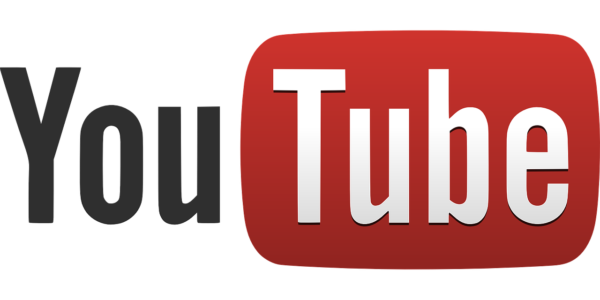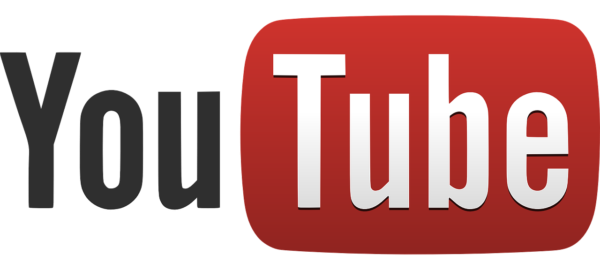— June 29, 2018

FreeCliparts / Pixabay
Let’s begin by driving this point home— hard.
No matter how awesome you are at search engine optimization (SEO), no matter how large your network is, no matter how much you invest in pay-per-click (PPC) ads, YOUR VIDEO CONTENT IS NOT GOING TO RANK IF NO ONE WANTS TO WATCH IT.
Period.
If you want to get more subscribers, views and show up in YouTube search, Google’s featured snippets or anywhere on the internet— you have to provide and strategically push relevant, informative, entertaining, bomb-ass content.
Here are some things to keep in mind to master your YouTube content strategy:
You’re Not Promoting You, You’re Sharing Knowledge
Your video content should not be about your company. No one cares about your company.
They care about themselves— and you need to care about them, too.
YouTube viewers need to benefit from your content, whether that’s by learning something new, solving their problem or giving them an interesting experience to pass the time.
That means your job as the video marketer is to figure out what their pain points are and how you can offer the right support.
Remember, you don’t matter— the information does.
Lead with the Viewer’s WHY, Not Your Company’s
If you haven’t heard of Simon Sinek’s Golden Circle theory, watch this TedTalk. Basically, Sinek asserts that companies fail at capturing an audience because they’re going about the delivery all wrong.
Most companies start off by telling you what they do and how good they are at it. But before they even start, the user is snoozing. Why?
Because, again, searchers don’t care about how your product or service won all these awards or that you’ve been around for 50 years.
They want something— and they want it fast.
It’s up to you to determine what that is and tailor all your content to recognizing their intent. Instead of delivering your Youtube content in a WHAT, HOW, WHY format— flip the order to WHY, HOW, WHAT and lead with their pain points.
Why are they searching? Is it to improve their SEO? Is it figure out how to pierce their ear? Is it to better manage their money and get out of debt?
Recognize their why right away— then, after you’ve emphasized and got them saying “Yeah!! That is me,” talk about how they can get their answers.
Your what, or your shiny product or service, needs to come last. After the searcher gets their sweet insights, toss in a casual mention at the end: “Oh yeah, by the way, there’s this thing we offer that might help,too. Just sayin.”
Focus on a Niche or Do it Better than the Competition
After you land on your idea, do a Google or YouTube search to see what information is out there on the results pages. Chances are, something like it already exists.
It’s your job to take a special angle, focus on a very niche, specific element of the overarching problem or dive in so deep, you slay the competition.
Don’t expect to rehash already existing YouTube content and get views. What did they miss? How could you say it more clearly, in more detail or in a way that gets the message across better?
Use existing content as a base to leverage new ideas or expand more thoroughly on ranking topics.
You Absolutely, Without a Doubt Need a Script
You wouldn’t get up in front a live audience without preparing, so cut the sh*t and stop getting in front of your camera without a clear video script.
The best speakers memorize their speeches, but luckily, the best-prepared video marketers have this fancy thing called a teleprompter— or for lower budget productions, cue cards, to make delivery easier.
You need a script to nail down your keywords, stay on track and ensure you’re hitting all your goals.
It’ll save you time in the editing process too, because you’ll know exactly what is coming up next to tell a clear, fluid story.
We’ll talk about keywords a little further down, but for now, just remember that a script helps you conceptualize your overarching strategy and avoid gobbledygook.
Say Your Keywords, Worship Them, Tuck Them into Bed at Night
If ranking on YouTube search and Google is one of your goals, and it should be, your content marketing plan needs a keyword strategy. This is non-negotiable.
Search engines like to see that your video content has depth, that it doesn’t just stuff (or repeat) one keyword over and over, but that it genuinely addresses other relevant topics or terms.
That’s why you need to focus on one big papa keyword, but still cast a wide net by covering other (semantic) keywords that often float around your big fish.
Put your keywords in your script, your video title, MP4 filename, thumbnail filename, YouTube video description, tags and closed captioning. Heck, when you reply to user comments on the video, try naturally adding some keywords there too.
The trick is, adding them in an authentic way that supports, not buries, your main point and still sounds natural to viewers.
Get to Your Point– Fast
Keep your intro tight, aiming to establish who you are, tell the viewer what’s coming up and dive in, all within the first 10-15 seconds.
After you reel ‘em in, don’t forget to keep the meat of your YouTube content quick and helpful, too.
We’ve all watched those painful YouTube videos where the intro starts off strong but is ruined by a long-winded, rambly “body.”
Fire information in bite-sized blocks, with clear visual and verbal changes to keep the viewer engaged. If one sentence takes longer than 10 seconds to say or one “shot” of video stay on the screen for more than 30 seconds, you’ve likely just lost a viewer.
Make it Long Enough to Write Home About
This is not to say your video should be short, in fact, longer YouTube videos tend to rank better, with the average length of a video on the first page of a YouTube search being almost 15 minutes long.
That’s probably because YouTube’s algorithm values watch time, prioritizing it as a ranking factor more than video views themselves.
The search engine wants to promote videos that keep watchers on the site longer and provide value for its audience. Longer videos just pack in more information, so don’t let your boss convince you that 60-second ads are the way to go.
Evaluate the pain points of your audience and aim to address them thoroughly. That should be your top priority— not hitting a certain length.
Show Your Face & Be Animated
Have you ever noticed how some of the best brands have a spokesperson or an ambassador standing behind their marketing efforts?
Progressive’s got Flo, Subway had Jared. That’s because people can relate to people more than objects.
People are attracted to genuine emotion— and authenticity builds trust.
Flash your smiling face on camera and get real. Show your excitement, express and empathize with your viewer’s frustrations and keep your eyes focused on the lens to to directly address viewers.
Get Yourself a Swanky-ass Recording Space & the Right Equipment
One study by Backlinko found that 68% of first page YouTube content is shot in high-definition (HD).
That’s probably because the quality of your video has a huge effect on the user experience. People don’t want to watch blurry, dark clips you filmed in your attic. Are you filming a horror movie or a corporate video??
Make your channel look professional by investing in your production quality. Get a sturdy tripod, a teleprompter, lights, set a backdrop, use a camera that was released in the last three years and you should be good.
End with a Clear Call-To-Action
After going through all this work, don’t forget to ask your viewers to take some sort of next step, or they’ll watch your video, go “hey thanks” and bounce.
Whether it’s downloading a content offer, subscribing, liking the video, leaving a comment below, asking them to fill out a form on your website or getting a tattoo of your product on their face (#extra), ASK!
Give your viewers something to do or they’ll do nothing.
This is where having a clear content marketing strategy comes into play, using insights on your personas, the buyer’s journey and more to create content to nurture users throughout each stage of the sales funnel. Pow-wow with your team to discuss your goals and how your video content can help you reach them.
Make it Look Pretty & Push that Vid’
You could put all this work in, but if you don’t invest in proper editing or distribution of your YouTube content, it could all be for nothing.
When cutting the clips together and polishing the final product, make sure your audio and lighting are on point, you’re adding transitions and exporting a high-quality video file.
Create a rockstar thumbnail too, one that’s simple but compelling— showing off your excited face or a clean image of your product or service.
After the clip is live, create a playlist on your channel. Include the best-ranked videos around that topic and place yours in the number two slot, right after a really popular one, so your new content plays by default next in line when a searcher finds the playlist.
Embed your video in a complementary blog post to give search bots text to crawl and attract traffic from an additional source, too.
Then, share away! On your networks, through email blasts and more.
Digital & Social Articles on Business 2 Community
(47)





